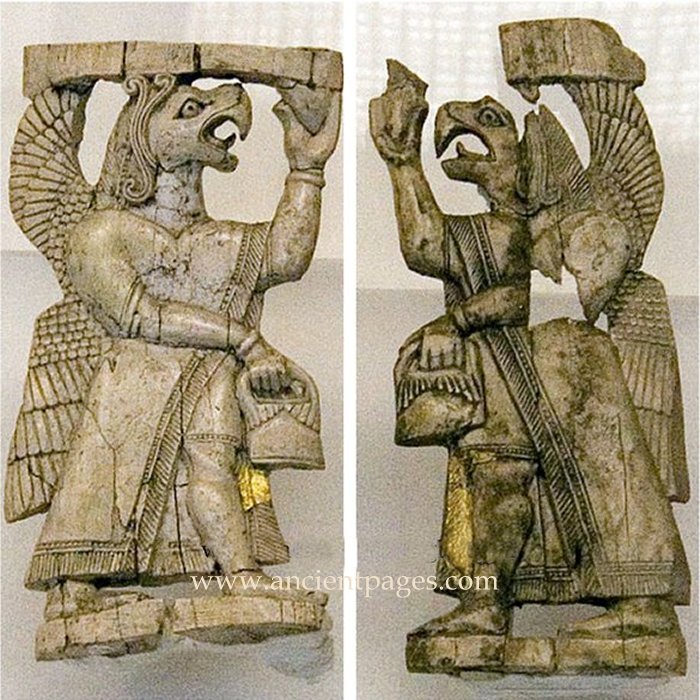Conny Waters - AncientPages.com - While searching for the frightening Lake Van monster, scientists made a great archaeological underwater discovery instead. Ruins of a mysterious 3,000-year-old castle have been found in Lake Van, Turkey.
The underwater ruins are supposedly from the Iron Age Urartu civilization, also known as the Kingdom of Van, thought to date back to the eighth to seventh centuries B.C.

Two of the Urartian gods holding an unknown object. The plates were decorations for other items and were found at Rusahinili, an ancient Urartian fortress in Turkey.
"There was a rumor that there might be something under the water but most archaeologists and museum officials told us that we won't find anything," the head of the diving team Tahsin Ceylan said, adding that they proceeded with the research and discovered the ancient castle.
The lost kingdom of Urartu is shrouded in mystery because very little is known about this ancient place and the origins of its people. The Hebrews referred to it as Ararat and in more modern times it has been named Kingdom of Van.
The kingdom’s beginnings are lost in the mists of pre-history, but before it was destroyed, Urartu was situated in Eastern Turkey, Iran and the modern Armenian Republic.
See also:
Mysterious Lost Kingdom Of Urartu And Its Enigmatic History
Ancient City Of Metsamor – Captured And Destroyed By Argishti I, The Ruler Of Urartu
Mysterious 2000-Year-Old Carved Vishap Stone Monuments Of Armenia
The earliest documentary mention of the land of Urartu can be found in Assyrian sources.
The underwater Urartu castle is about 1 kilometer (0.6 miles) in length, with walls reaching 3 to 4 meters (10-13 feet) high. It is still in good condition thanks to the alkaline conditions. of the lake have kept it in fairly good condition.
Underwater ruins of the Urartu castle. IHA Photo
History of Van Lake goes back about 6,000 years. Lake Van is the largest lake in Turkey and the second largest in the Middle East. It's also the biggest sodium water lake in the world. The lake lies on the high grounds of Eastern Anatolian region near the border with Iran. It was formed by a crater caused by a volcanic explosion of Mount Nemrut near the province of Van.
Conny Waters - AncientPages.com






